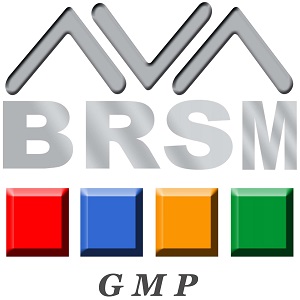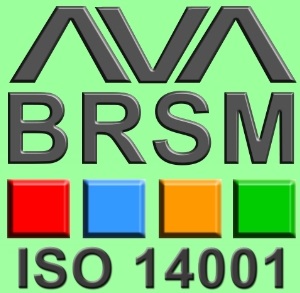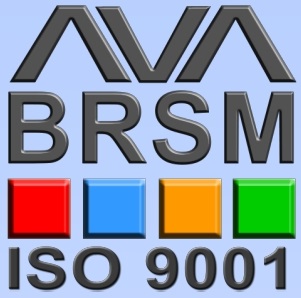Upgrade Old Off-Shore & Marine HVAC+R System
ARMANIK has built a strong presence in the marine ,offshore and process cooling industries. We provide service, parts and upgrades for refrigeration and HVAC systems on board drilling rigs & all kind of vessels and industrial cooling . Our service engineers have all of the necessary safety training as well as the knowledge base to solve any problem you may experience with your refrigeration or HVAC systems. From our roots in Tehran to our main office and fabrication shop in around the country , we’ve been doing this for a long time.
The power used in running a system's Heating, Ventilation and Air Conditioning and refrigeration (HVAC+R) is quite substantial, so any measures to improve its efficiency will save energy and cash. An upgrade of the HVAC system can be carried out by replacing the old worn components with modern more efficient units.
Providing air conditioning in the summer and heating in the winter, HVAC is an essential part of any sysytem. Heat or cold air is supplied to the different rooms or offices by ducting and is normally thermostatically controlle
The following sections examine some modern methods to improve the efficiency of HVAC systems.
Modification of an Existing HVAC System to Improve Efficiency
Approximately at on-bord systems and process industrial , 40% of the total energy used is consumed by production systems, and HVAC +R consumed a substantial percentage of this energy.
It is therefore in companies’ interest to decrease this energy use, and one way to do this is to improve the efficiency of the HVAC plant.
Before any modification is commenced, maintenance records should be checked to ascertain that filter replacement, heating/cooling coil cleaning ,and all volume control damper maintenance has been attended to regularly.
The state of the existing ducting should be closely examined to ensure there are no leaks in the system. Flanged joints and flexible ducting are notorious for leaks; gaskets should be replaced where required and any leaking flexi-ducting should be replaced.
In a large HVAC system, a duct leakage of 10% can end up as a 30% increase in energy consumption.
Insulation is also very important; loss of heat or coldness through steel ducts is costly! Therefore, all ducting should be inspected for breakdown of insulation, with it being noted but not repaired at this stage as new components may be fitted to the ducting. Modern ducts that can be purchased pre-insulated with the latest high efficiency insulation should be considered in an upgrade.
Use of Highly Efficient HVAC Components
Designers of HVAC systems are famous (or infamous) for being a bit heavy-handed when estimating the heating and ventilation requirements of systems. This is presumably to ensure supply despite air leakage from ducting and components. Sometimes this is justified as extensions are frequently added, so the existing HVAC system will cope.
Electric Motors
Air circulating fan electric drive motors are a classic example of overrating, so the first thing to check is the rating plate against the design requirement in the original specification. This will tell you if you can downgrade the motor output.
If the system has been operating for a long time, 10-15 years for example, fitting variable speed motors is a worthwhile investment. This will allow the speed of the fan to be altered to suit changing conditions in the system. This has been reported to achieve savings in energy of up to 50% and, if the existing switchboard and wiring are retained, even more savings can be made, ensuring a short pay-back period
Air Filters
Replacing standard disposal air filters rated at MERV < 4 with energy efficient pleated air filters, at MERV11 for example, can make for savings in the fan drive motor’s energy use of 2-4%. However, remember that disposable filters are used because they are cheaper to buy and maintain; the permanent filter is more expensive to buy and will need regular maintenance of stripping and cleaning.
Fabrication of Ducting
The fabrication of HVAC ducting should incorporate energy efficient measures such as turning vanes at 90° bends and smooth transitions between ducting and components of different sizes or sections. Galvanic corrosion between galvanized steel and stainless steel should be prevented by isolating them from each other; this will save on duct/component replacement costs.
Diffusers and Grilles
The supply and extraction of the air to the rooms/offices can be made more efficient by using modern diffusers and grilles and improving airflow control. These ensure that the optimum amount of air is admitted and extracted from the rooms, promoting more uniform room temperatures.
Heating and Cooling Methods to Upgrade HVAC
As we have seen earlier, the hot or cold air is supplied to the system by the fans that draw the air through coils in the air handling unit.
Large commercial systems use hot water as supplied by a furnace to circulate through the coils producing hot air and cold water from chillers being used for the air conditioning. Both these methods have been in use for some time, but modern appliances have seen efficiency rise by 20%, therefore the modern furnaces and chillers should be examined.
Control Systems
Modern HVAC management control systems can also improve the efficiency of the system. The control system constantly monitors the temperatures and pressures of the air at strategic points throughout the HVAC system.
Ducting static air pressure monitoring and control through automatic adjustment of circulating fans/dampers. (Also detects air leaks)
Checks on air condition for humidity and filtration operation
Electronic Programmable Thermostats -These automatically control pre-set, comfortable temperatures both during working hours and when building is unoccupied, reducing energy and increasing overall plant efficiency.
Zone sensors - These are sensors for control of air quality and quantity supplied to the different zones or areas of the system, e.g. offices, rest rooms, conference rooms, executive suites, canteens, and cafeterias.












